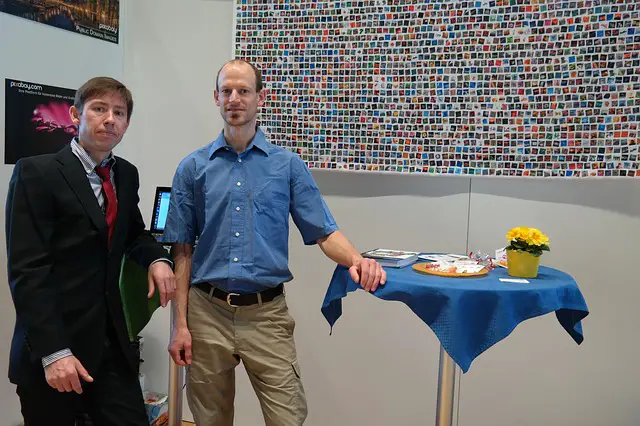Eat, sleep, work, repeat. This routine pretty much describes the life of many people. Sure, it is not entirely the truth. Even if our work hours exceed 40 hours per week, we somehow manage to squeeze other stuff into our lives.
But we wouldn’t be lying if we said many of us feel stuck in the same routine and this is a way to sum it up. Some may even say that it is an understatement. It is not uncommon to wake up way too early to get to work, work overtime, and skip lunch. In that case, we can rule out the “eat” and “sleep” parts. All we are left with is “work” and “repeat”.
To make things even worse, we feel stressed, drained, and meaningless while we are working. It all adds up and work-life is nothing more than a depressed and unpleasant experience. So what is the problem? And what can be done to fix it? Those are the questions that we will try to address.

Chapter 1 – Being unhappy at work is a common problem and it has a huge effect on our health, welfare, and productivity.
If you feel that you are not happy at your job, then come join the club!
Many surveys show that the vast majority of people have negative feelings regarding their work. A staggering 83 percent of American workers declare that their job, in fact, makes their lives more stressful. More than half of the British employees state that they feel exhausted by their work. And if you ask employees all around the world to give a ranking to their daily activities from their most favorite to their least favorite, they will rank going to work as their second to last favorite. If you are wondering what is their least favorite activity: lying in bed sick.
What we are up against is pretty clear, and it only gets clearer when you consider the effects of all of this unhappiness.
Having a stressful job has many more consequences than just making your life miserable. It affects both your physical and mental health. Let’s tackle a study by Alexandra Michel, a researcher at the University of Southern California. Her research was on investment bankers and how working 15 hours a day would have an impact on them.

Hair loss, extreme weight gain or loss, insomnia, and panic attacks were some of the physical outcomes. By the end of their fourth year, they were falling ill with diabetes, heart problems, and even cancer. The effects on their mental health were equally serious. Drug and alcohol addiction, depression, and anxiety were some of them.
These problems are all very troubling and should concern us all. But even if you are a cruel boss who only cares about his business, it still should seriously worry you. Besides the overall health of your workers, your business would be taking a hit since their ability to do their job is decreasing.
The statistics are here to prove it. Researchers from Warwick University conducted a study that proved workers who are happy at work are 22 percent more productive than workers who aren’t. Also, stress symptoms can have serious consequences on work performance. For example, you are likely to make errors while working if you aren’t getting enough sleep.
A range of job sectors has this connection, from healthcare to the military, according to researchers. Science really isn’t needed here to prove it to you though, you’ve probably experienced it yourself before: you can’t think clearly when you are tired.
Chapter 2 – Stress has a negative impact on creativity.
You’ve probably heard the saying “working better under stress”. So, it can’t be all that bad, can it?
You’re on a dead end with a project? Nothing can motivate a person more than an approaching deadline, many of us would think. But that is not entirely true.
There is a reason why. Not only it opposes our creativity, but stress can also impair our ability to accurately appraise our own work. Therefore, we think of our project to be a lot more creative than it really is.
Teresa Amabile, a professor at Harvard Business School, found that as a conclusion of her study. In the study, employees were provided with a journal to fill out. The closer they are to the deadline, the higher they would rank the creativity of their work. But the professor found out that it was actually the contrary: the nearer the deadline, the lower the creativity.

Basic neuroscience can explain this. We need to be enthusiastic about fresh ideas and risks to be creative. When we’re under pressure, we feel a rush of adrenaline, which may help us get a kickstart. But it also triggers fear. Thus, it makes it impossible for us to explore and take risks.
A “sophomore slump” is highly common for this reason. For example, The Strokes is a New York City rock band which released their highly successful debut album in 2001. They were highly under pressure to come up with a second album that would meet the high expectations.
They recorded from scratch many times and they finally released their second album called Room on Fire in 2003 and it received mixed reviews. Many of the reviews were negative and they called the second album a replica of the first one, only a less inspired one. The band chose to do the similar things they have done with the first one since it was highly appraised and they ended up failing to come up with something new.
What did we learn from that? You are more likely to play it safe under pressure – to stick to your old ways of doing stuff, rather than taking a risk and exploring. This is a huge problem for rock bands and companies also, considering our innovation is a key to success in today’s economy.
Chapter 3 – Most of the workers do not engage with their jobs and it has a negative impact on businesses.
Even if you are thinking only about your business, workplace unhappiness is a thing to worry about since by now, we’ve found out that it means less productivity and less creativity. But the problem only gets worse.
Like being stressed out by their jobs isn’t enough, workers also feel a lack of engagement with their jobs. What it means is that they are not passionate about what they do and they don’t feel attached to the job they do or the people they work for. A Gallup poll in 2018 found that this is true for 53 percent of American employees, while another 13 percent were actively disengaged.
If you are the management, you would consider this a problem. Why? It has something to do with what is called the discretionary effect.
Let’s assume that you’re a CEO. What would you expect your workers to do? Obviously, you would want them to work but that is not the whole case. You would want more than the bare minimum. If we are speaking in fancy business jargon, this work which is more than the bare minimum is called discretionary effort. Because it is something that is up to the workers and it depends widely on how motivated they are.

And we are back to the topic of engagement. If more employees feel engaged by their jobs, they would be more motivated, thus they would be putting in discretionary effort. If they are doing their jobs just for the money, they are more likely to do the bare minimum. On the contrary, if they are happy with their jobs and they feel an attachment to their companies, they will be more likely to work harder in their jobs.
It doesn’t come as a surprise that companies that are trying to create a better work environment and a positive “employee experience” are having higher levels of employee engagement and better success. These companies have profits four times higher than the average company and 28 times more likely to end up in the “Most Innovative Companies” list by Fast Company, calculated on a per-employee basis.
To summarize what we’ve covered so far: a content, unstressful, and an engaged employee is a creative, productive, and committed employee. That’s a conclusion both employees and employers would enjoy. But what can we do to accomplish that?
Identifying the causes of workplace unhappiness and figuring out some solutions is a great way to start.
Chapter 4 – The majority of us are tired from overworking, constant connectedness, and continuous distractions.
Are you feeling nervous about your job? Do you feel like you have things to do even if you do a lot of work? Do you get stressed or feel guilty when you aren’t busy?
If you said yes to these questions, you may have a condition called hurry sickness – a lot of people have it. It is something that comes with bigger problems which are found in our modern workplaces.
Getting overworked by our jobs is as simple as working long work days or weeks. But it isn’t entirely about that. It also has something to do with how many hours we spend outside those hours.
The majority of us feel suffocated inside working hours and we constantly feel like we have to be busy. If you are working in offices, you may feel that you are tied to your desk.
It is not easy to talk about a single task when you are working because you are constantly drifting from one task to another. Maybe you get an email that captures your attention while you were meant to be focusing on another project. Or maybe you are interrupted by a coworker that comes over to you to chat about something. Or your boss invites you to yet another meeting.

We are in an age where digital communication technology is on a rise. Therefore we are almost always connected with our coworkers – and almost always getting distracted by them as a conclusion. It can be one of the 200 emails an average person who works in an office sends and receives per day or one of the many text messages or phone calls that want us to give them our attention. Many offices nowadays have cubicles which are open spaces that allow our coworkers to freely approach us and possibly distract us in person. Also, a lot of companies seem to hold a lot more meetings than necessary, thus leaving us with very little time to get the actual work done, we are surprised at how we are getting any done at all.
In other words, it doesn’t come as a shock that we always feel like we have things to do. We have always pulled away from work with all the interruptions and distractions. And even when we get back home, the message traffic never stops so we always continue to check them.
As a conclusion, 60 percent of workers are connected to work for 13.5 hours per weekday and 5 hours over the weekend. That makes a total of 70 hours per week. No surprise we all are tired.
Chapter 5 – We can recharge our energy at the workplace with some simple adjustments in practice.
How can we recharge that drained energy of us from all of this restlessness?
In this part, we will go through the simplest and the most acceptable things to be done. In the next part, we will tackle some more radical and contentious things.
The first solution may sound like a stereotypical one but it is very efficient: turn off your notifications. When you hear the sound of the notification it is hard not to take a look immediately. It is best to avoid that situation altogether by only checking your notifications when you need to check them.
Another simple thing is to go on the lunch break with your coworkers, if possible. Avoid skipping lunch and, if you can, avoid having lunch by yourself. It obviously decreases your energy for the rest of the day but the study shows it also can have a negative effect on your sleep, therefore, make you exhausted over the weekend. Researchers at Oxford University have concluded that eating alone is the second greatest contributor to unhappiness and the first one is a pre-existing mental illness. When we are having lunch with our coworkers we are socializing and feeling better.

Another simple thing? Going for a walk. A walking meeting with a coworker is a great idea. If one of you is going through a problem that person talks about it while the other person does nothing but listen. “Talking it out” is the idea, so you can feel refreshed.
The ideal duration for the walk? It ranges from seven minutes to half an hour – it is up to you.
Chapter 6 – Even more radical measures can be taken to recharge employees’ energy with the help of employers.
If you want to hear more about measures to take to recharge your energy, good for you! But, before starting out, a brief warning.
If you are a worker, remember that these measures will need the help of your employer. But, you can always bring these ideas up to them about trying them out!
You probably have heard about the airplane mode if you’re using a smartphone but do you know about the monk mode? To be honest, it’s not a real feature but it can be done easily if you start applying it with your coworkers! What it means is that you will be out of reach during certain predetermined hours – for example, every Monday and Tuesday until 10 a.m., or something like that. By that, you will have a chance to focus on your work entirely without any interruptions. To take it up a notch, you can start working from home during your predetermined hours.

When you are working in the office, you and your coworkers can have predetermined working hours where everyone is allowed to wear headphones. There are ups and downs of having headphones while you’re working in the office but this way you’ll get to experience both of them. You can use your headphones to cancel the noises of the offices and also as a signal to other people that you don’t want to be bothered right now. You will still get to enjoy the office atmosphere and be social outside those hours.
If you want something stronger than the monk mode and the headphones, try being unavailable for a whole day. You won’t be getting any calls, texts, or emails and there will be no way to reach you at all. It is best to take turns if you are doing this so that only one of the workers is unavailable at the same time.
If that is too much, try doing that over the weekend. Your weekend being free from work is very important, even for your productivity. A Stanford University research concludes that people who work 48 hours per week while getting their Sunday off are far more productive than people who work 56 hours per week with no day off.
Work hours being shorter is great for boosting energy. An experiment conducted in Sweden showed that public sector workers were more productive when their working hours were reduced from eight hours per day to six. Also, their health got better, and they missed less work. It is great both for workers and employers.
Chapter 7 – Major improvements in our relationships with our coworkers can be achieved by minor changes in the work environment.
Do you feel like you are all alone at your workplace even if you are surrounded by many of your coworkers?
If so, you are not the only one. It is called workplace loneliness and it’s on a rise. Even though they spend the majority of their day with their coworkers, nearly half of the Americans said that they feel lonely sometimes or always at work.
One of the main causes of workplace unhappiness is workplace loneliness. So what can be done to fight it and feel a connection to our colleagues?
Talking with each other is the most obvious way to start. But email exchanges or work-related texts don’t count as a conversation. You would have to sit down and talk to each other, have a real conversation.
Small talk is often perceived as bad but it is actually a very important part of building a new relationship with new people. This is extremely true in the workplace. Casual chat allows us to get to know about our coworkers better and it also gives us a chance to talk about our problems with work, share some of our tips, and brainstorm ideas with each other.

MIT professor Alex Pentland’s study reveals that one-third to half of all productivity derives from developments that initially originate from casual encounters. Even these same experiences make our brains produce endorphins – so here we have a win-win case for the morale of workers and employers’ also.
What can be done to encourage casual conversation? Companies should go for minor changes in the work environment to promote it. Do you want your teams to talk to each other more? You should try to place the coffee machine or water cooler in the middle part of their office area, or you can encourage them to share a break room together.
Another perfect way to get people together is to hold social gatherings while in work hours – for example, every Thursday at 3:30 p.m. After-work events are also great but they can be hard to participate for workers who have responsibilities at home, such as parenting, therefore planning after-work events can be an inconvenience and exclusive for those workers and companies should avoid these events.
If you want these events to be really fun and enjoyable, there are two things you can do. Firstly, having a little ice-breaking session. At the beginning of each event, get everyone to assemble and have several people introduce themselves shortly. The second one is having some food and drinks. It can only take a slice of a pizza, a cup of coffee, or a bottle of beer to bring people closer and hold a genuine conversation.
Chapter 8 – Companies can create a buzz in the workplace by encouraging positive mood feelings and psychological well being.
Sometimes, you walk into an office and it feels like a mixture of a library and a morgue. Everyone is sitting at their designated desks that they always sit at, they are religiously typing stuff on their computers and their faces look like they are at a funeral. The office feels like a place for dead people.
Would you want to work in an environment like this? Most of us would say no. We would prefer an excited, sociable environment. Yet sadly for most of us, the first one is the environment we will most likely experience because that’s the dominant environment in so many workplaces. In this last part, we will look at possible solutions to turn the situation around and create a “buzz” that should turn the office space into a perfect place most of us would want to work at.
We want our workers to feel a sense of buzz and to do that, they need to have two feelings. The first feeling is a positive mood feeling. You can call it being in a good mood but it is even more than that. It is not being positive about something, in particular, it is way more general. It is an emotion that free-floats and overall fills your take on life with a sense of safety.

Psychological well being is the second feeling. What that means is that you don’t feel any discomfort around your bosses and coworkers and on the contrary, you feel pretty safe. You don’t have a constant fear of judgment coming from them. You don’t worry about the consequences of a small mistake that you are likely to make when you are around them. Rather, you feel safe enough to be yourself around them.
There is a way that companies can help their workers to feel those two feelings at the same time: have a hack day every month or two, or even a hack week one or two times a year. The hack day means that for an entire day or week, every worker at the workplace divides into teams, and they quit their regular work or tasks, and they try taking risks and experiment with new ideas to find brand new ideas for their product or service to improve. In teamwork, we tend to lose the spirit of playfulness and this can help bring it back into our teamwork. Also, since everyone will be experimenting and trying out new things, everyone will be more comfortable making a mistake around their coworkers.
These hack days or hack weeks can also have a theme. For instance, Twitter’s theme was how to improve social media’s availability to host conversations. This theme eventually helped Twitter to introduce many improvements on their app and website and threaded conversations and ways to combat abusive Twitter users are a few of them.
What do you think you and your coworkers would discover if you were to have a hack day or a hack week of your own following Twitter’s lead?
Eat Sleep Work Repeat: 30 Hacks for Bringing Joy to Your Job by Bruce Daisley Book Review
Workplace unhappiness is a common issue with several causes: overwork, continuous connectivity, constant distractions, loneliness, and lack of buzz. Helping employees re-energize themselves and putting them together in groups as team members can help solve these problems for companies. To accomplish these, both employees and employers have quite a few options. Lunch breaks, disconnection for certain hours, limited work hours, social gatherings, and hack days are a few of them.
Focusing on smaller teams helps create more connection and buzz.
Hack days are great for large companies and the reason is that it enables them to divide a large number of employees into smaller ones. People are more likely to feel overwhelmed in large groups while communication is easier in smaller groups. Instead of company culture, companies should focus on cultivating the culture of small teams. A great rule of thumb for the majority of companies is to have groups of eight or nine people.
